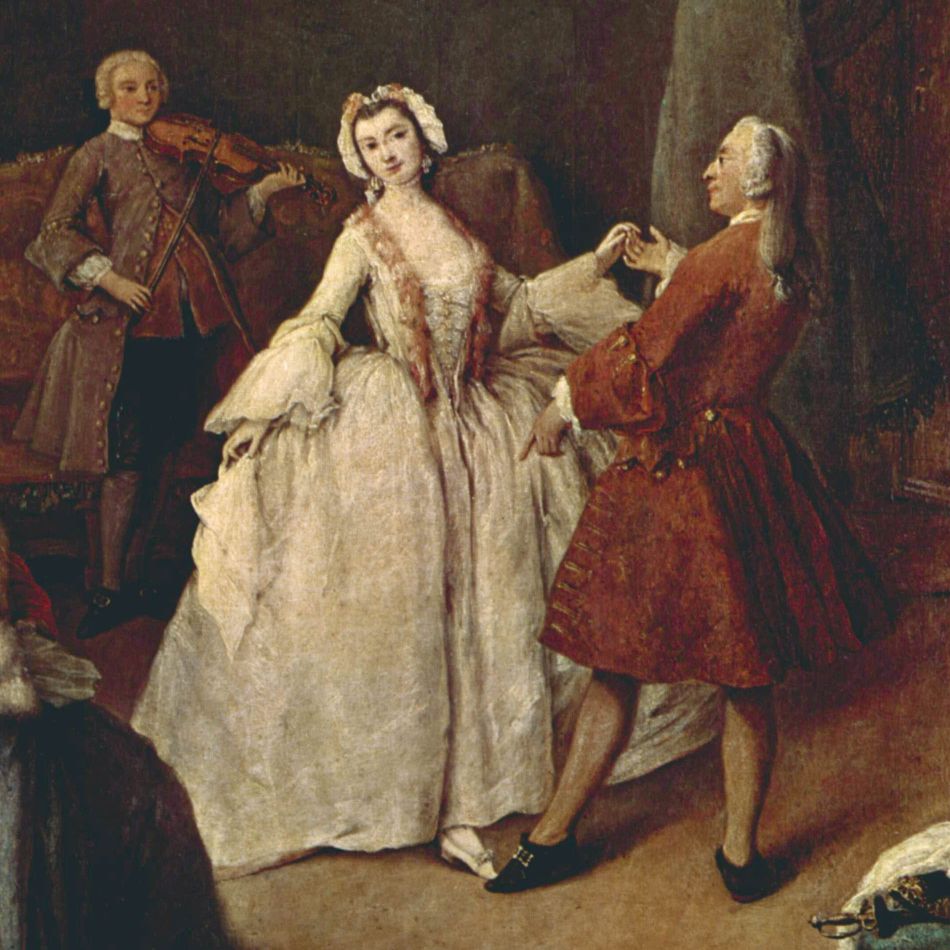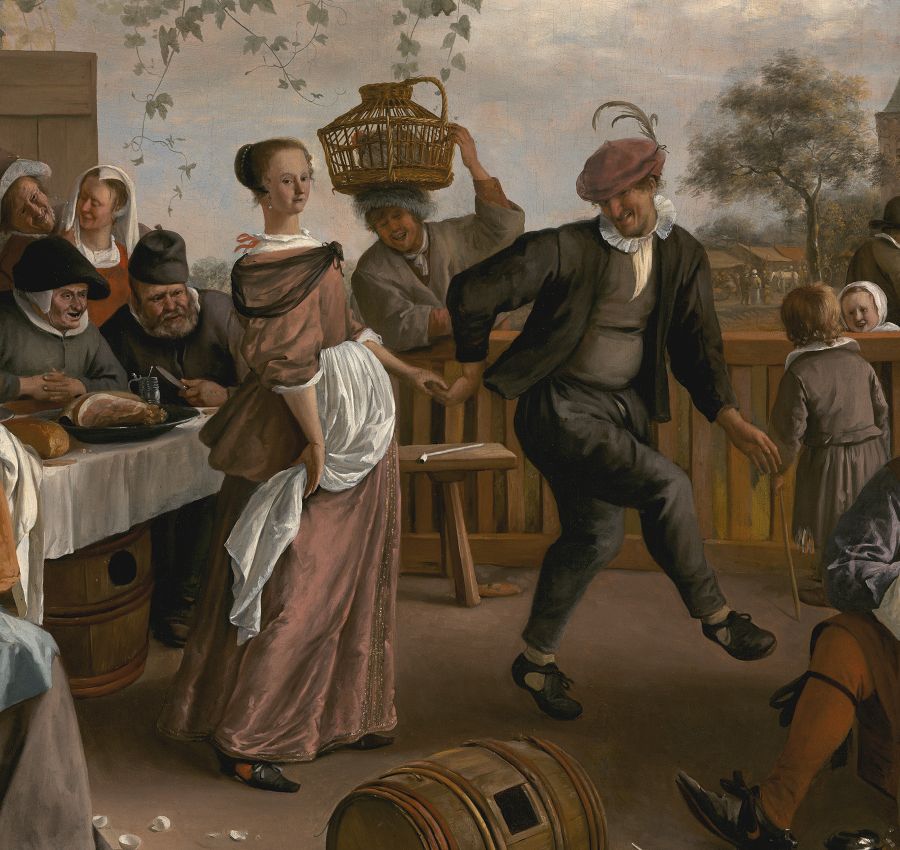WHO USED TO DANCE SUCH DANCES AND WHERE?
When talking about historical dances, the word refers almost solely to dances of the nobility and upper classes (i.e. courtly dances). Of course, the "common folk" had its own dances, but there is very little information about what they might have been up until the 19th century.
Most historical dances are referred to as "Italian", "English", etc. However, these dances were part of the pan-European court culture in the sense that most dances, or at least the dance styles, were known in most European courts. Queen Elizabeth I of England, for example, is known to have enjoyed dancing, skilfully no less, Italian dances of her era. The so-called "nationalities" of dances primarily refer to the country or language of the source they are now known from.
Pietro Longhi: Ballando Lesson, 1741 (detail)

